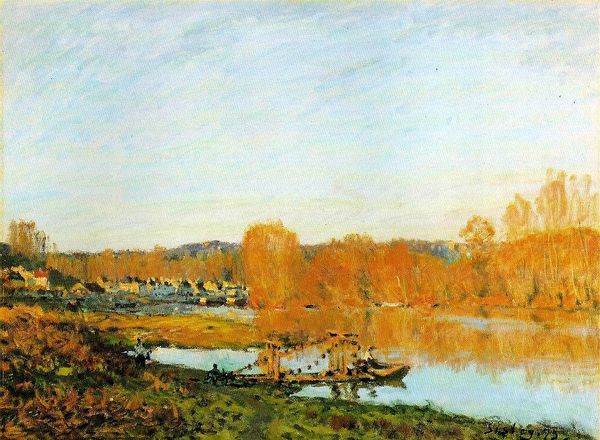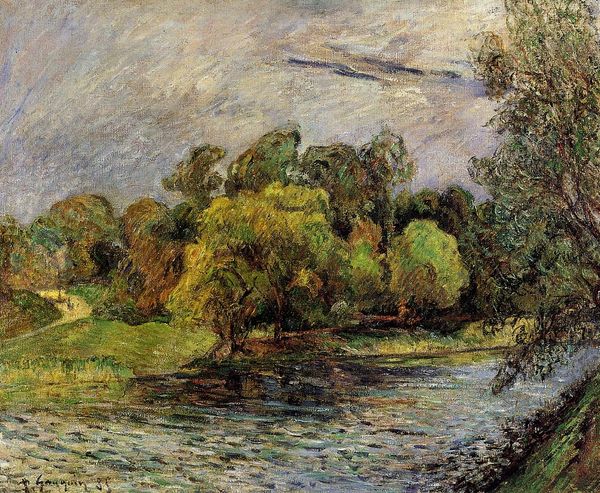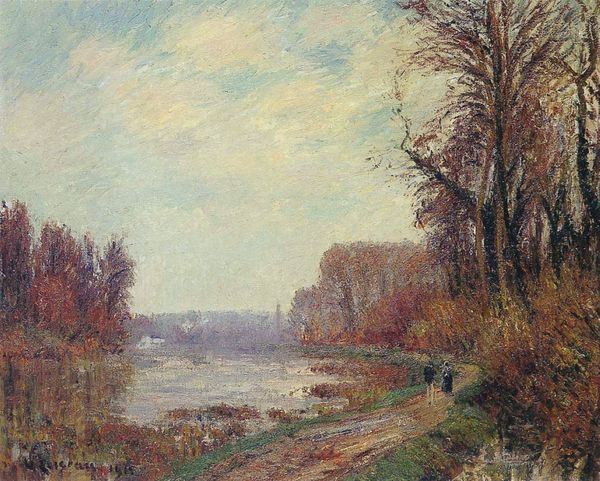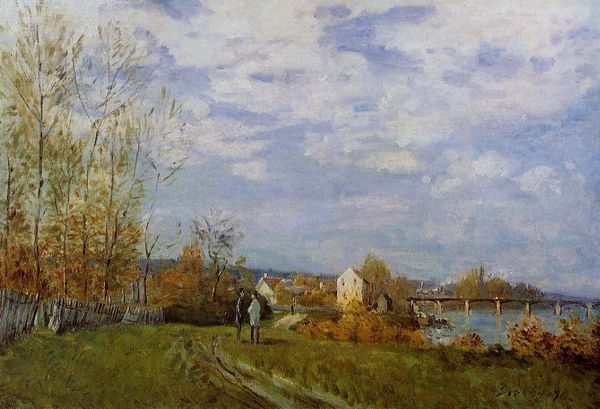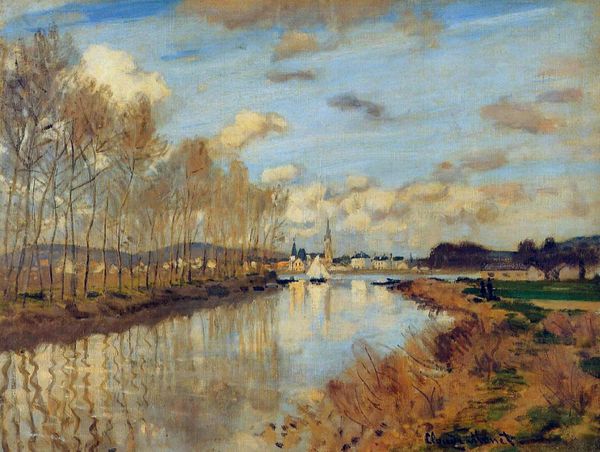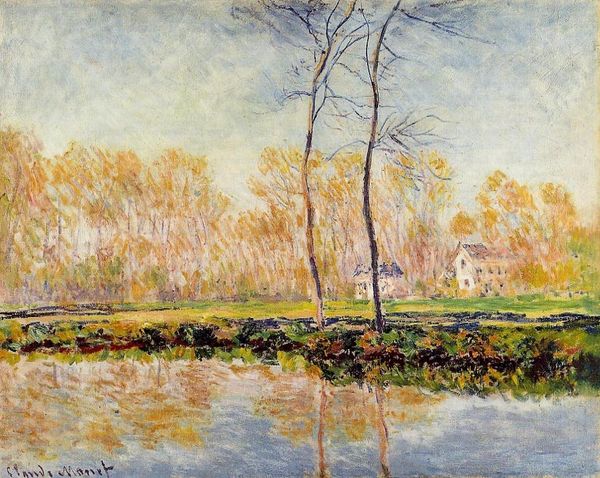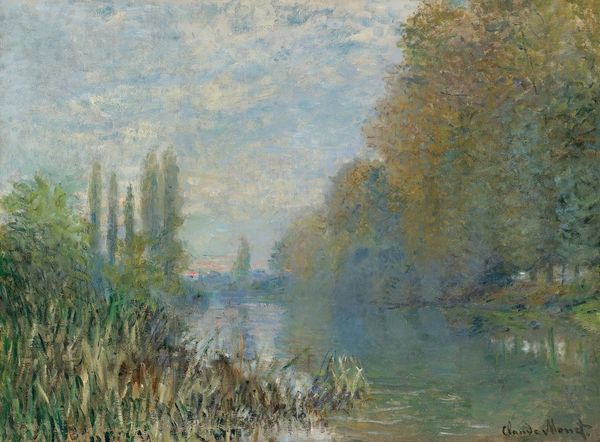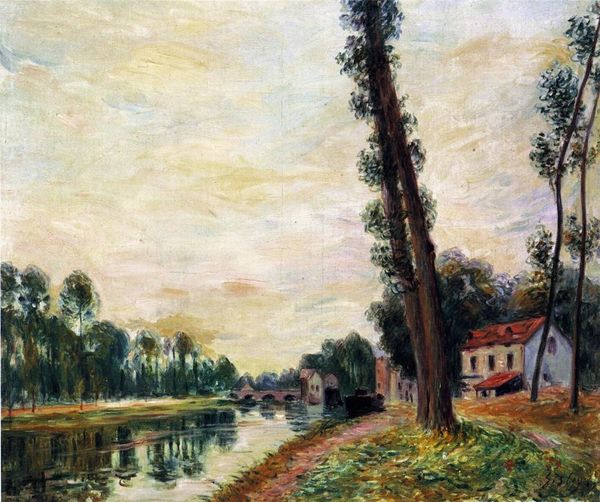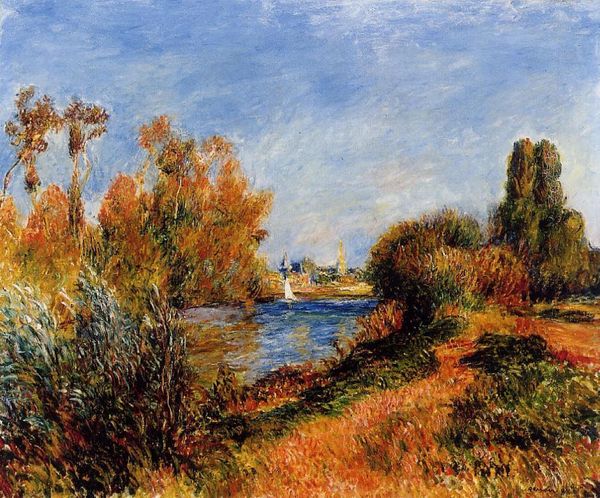
Dimensions: 60 x 73 cm
Copyright: Public domain
Editor: This is Alfred Sisley’s "The Loing Canal," painted in 1897 using oil on canvas. The colours seem quite earthy and muted. I'm struck by the presence of boats. It's not just a serene landscape; there is a sense of industry here. What do you see when you look at this piece? Curator: I'm interested in the canal itself. Its construction involved a massive reorganization of the landscape and, more importantly, labour. We must consider who built it and under what conditions. Notice how the artist renders the water. Its function here goes beyond being part of the landscape. It is a means of conveyance and a reflection of the industrialized world slowly encroaching on nature. Editor: So you’re focusing on the canal as a symbol of the working class rather than just a pretty scene? Curator: Precisely. Impressionism often gets framed as capturing fleeting moments of bourgeois leisure. But Sisley here embeds into the idyllic landscape elements of work, of material production. Where are the leisure boats, the sailboats? There's a stillness, a silence, hinting at something beyond pure escapism. Editor: That makes me see those barges in a different light! The trees and foliage almost become a backdrop to the industry on the canal. Curator: It certainly suggests that Sisley was acutely aware of how landscapes are not just "found" but actively shaped by material and social forces. Consider the physical process of plein-air painting. Sisley confronted the materiality of paint, its texture, and application, while representing the material impact of the canal. Editor: This gives me a much deeper appreciation for the layers of meaning an Impressionist landscape can hold. Curator: Indeed. Shifting our focus from aesthetic appreciation to material realities enriches our understanding, highlighting art's engagement with the world around it.
Comments
No comments
Be the first to comment and join the conversation on the ultimate creative platform.
